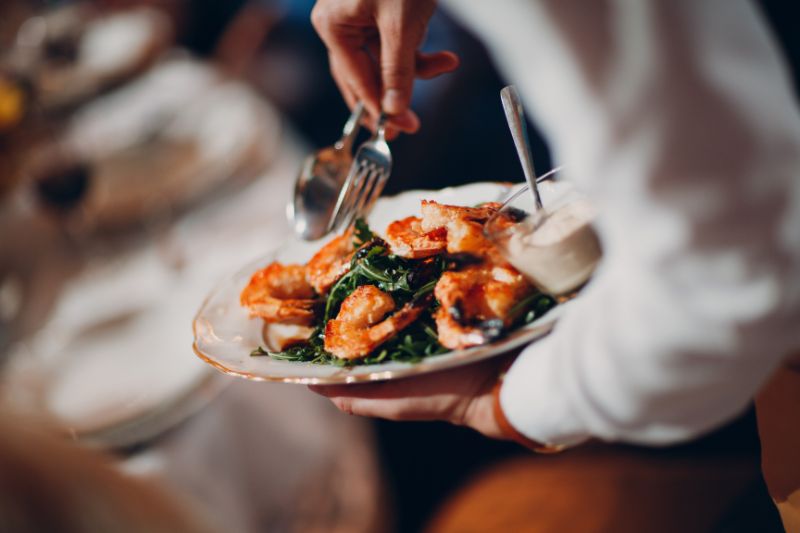Engage your team with cooking challenges, starting in Rome’s markets
There's a peculiar moment that happens when you hand a group of office workers sixty euros and tell them they have two hours to create a three-course Roman meal from scratch. The spreadsheet experts suddenly look uncertain. The confident presenters go quiet. Then someone spots a vendor selling fresh artichokes, and everything shifts.
Rome's historic food markets—Campo de' Fiori and Testaccio—have become laboratories for a different kind of professional development. Not the kind involving whiteboards or breakout sessions, but the sort where your procurement manager discovers she's brilliant at haggling with fishmongers, and your IT lead turns out to have an unexpected talent for selecting ripe tomatoes.
Why Rome's markets create effective team building environments
The historic food markets of Rome provide authenticity that corporate venues cannot match. Campo de' Fiori has hosted a vibrant daily street market since the second half of the 1800s, whilst Testaccio Market has roots in ancient Rome and served as the city's main trading area because of the Tiber River. Unlike the more tourist-filled Campo de' Fiori, Testaccio offers a refreshingly authentic atmosphere where locals outnumber visitors.

Vendors of Roman artichokes, fresh mozzarella, seasonal vegetables have perfected their craft over generations, so much so that they feature as characters in local stories and even films. That's part of the thrill: teams must negotiate with actual vendors using limited budgets, creating real stakes and genuine interactions. Will the reserved accountant become your best negotiator when faced with a theatrical vendor's sales pitch?
How culinary market challenges work
Teams get a limited budget, a few must-have ingredients, and about two hours. They have to hunt for supplies, strike deals with vendors, craft a Roman-inspired menu, and present their creation to the judges.
Yet beneath that simplicity lies a surprising level of complexity. Teams soon realise how quickly a budget can vanish when quality ingredients are on the list. Every small decision reflects the same kind of challenges teams face in the workplace every day.
Once teams source their ingredients, they must develop a cohesive Roman menu. This isn't about following recipes—it's about understanding flavour profiles, seasonal availability, and culinary tradition whilst injecting creativity. The final presentation adds another layer. Each team is asked to express a clear creative idea, explain the reasoning behind their choice of ingredients, and show how their menu brings together authentic Roman flavours with a touch of originality.
Why cooking challenges bring teams together
Cooking as a team-building experience works because it draws on basic human instincts to collaborate and connect—not simply because it looks good on social media.
Preparing a meal side by side encourages teamwork in its most natural form. Everyone has a role, every step matters, and the result is something concrete that can be seen, touched, and tasted. Unlike corporate targets that may occasionally feel hardly relatable, a finished dish delivers instant shared pride.
Put a CEO and an intern side by side at a market stall, both checking for the freshest tomatoes, and something shifts. The usual distance between ranks disappears. In a kitchen, people meet as people, and conversation flows in ways it rarely does in the office.
Maybe the director who handles numbers with ease fumbles with a knife, whilst the new hire—used to helping in a family trattoria—steps up and leads. For a while, authority moves differently. That small, temporary change often leaves a lasting mark on how a team works together.
When a dish starts to fall apart or time runs short, everyone has to think on their feet. They adapt, swap ideas, and find fixes as they go. The pressure feels real enough to spark focus but light enough to stay fun. After all, nobody's career hinges on the perfect carbonara.
This creates an ideal learning environment where people practise creative problem-solving without fear of serious consequences. The challenge feels meaningful without being threatening, which is why engaging in food-based team activities can reduce stress levels amongst employees.

Cultural immersion as development catalyst
Rome's markets offer something beyond ingredients. They add a layer of meaning to the whole experience. Strolling through Campo de' Fiori, hearing its stories, and walking the same stones Romans have crossed for generations gives the whole experience a sense of place and meaning.
Sharing food is one of the easiest ways to understand a place. It's not about theory or slides—it's about tasting, talking, and learning together, as teammates connect through the flavours and stories that define Roman cooking.
Maybe a vendor explains why Roman artichokes have a different bite than globe artichokes, or shows how to pick a fig at its sweetest. These small exchanges stay with you because they're real, personal, and taught by someone who lives that knowledge every day.
Unlike traditional activities, cooking creates lasting, enjoyable memories and a strong sense of camaraderie that significantly improves teamwork and efficiency in the workplace. Years later, colleagues still reference shared moments from the market. These shared reference points become part of your team's internal culture, providing lighthearted ways to connect during stressful projects.
Transferable skills: what can a cooking challenge teach you about your workplace?
Managing a tight budget is hardly a skill that can be confined to cooking: it translates directly to handling project resources at work. Negotiating with market vendors gives the same lessons you use with suppliers or clients. And checking each other's work—tasting, timing, adjusting—mirrors the attention to detail that keeps professional projects on track.
Trust grows in unexpected ways. When a teammate insists, "this mozzarella is the freshest," you have to decide whether to follow their lead. These small decisions build confidence in one another, creating habits that carry over to the office.
Cooking gives people a chance to relax, laugh, and focus on something real. The hands-on, sensory experience pulls attention away from deadlines and into the moment. Teams walk away buzzing with energy, motivated, and genuinely excited to work together—even after the last plate is cleared.
Why this works
In Rome's markets, titles lose their meaning. Amongst bustling stalls, bargaining over produce, and cooking side by side, everyone is just a person contributing to something real. That short stretch of vulnerability sparks authentic collaboration, softens hierarchies, and makes teamwork feel effortless.
At its heart, the cooking challenge isn't just about food—it's about setting the stage for teams to connect, trust, and work together in ways that last. Where problem-solving happens instinctively because the goal is clear and the stakes feel real without being genuinely risky.
When you need your team to communicate better, collaborate more effectively, and remember they're working towards shared objectives, sending them into Campo de' Fiori with limited resources and time constraints achieves what months of conventional team building cannot. The lesson isn't complex: when people work together towards a tangible, meaningful goal in an environment demanding authentic engagement, they naturally develop the skills and relationships that make them more effective colleagues.
